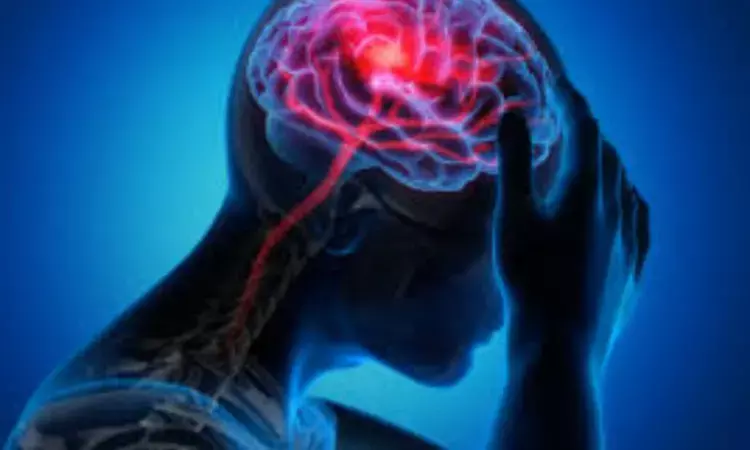- Home
- Medical news & Guidelines
- Anesthesiology
- Cardiology and CTVS
- Critical Care
- Dentistry
- Dermatology
- Diabetes and Endocrinology
- ENT
- Gastroenterology
- Medicine
- Nephrology
- Neurology
- Obstretics-Gynaecology
- Oncology
- Ophthalmology
- Orthopaedics
- Pediatrics-Neonatology
- Psychiatry
- Pulmonology
- Radiology
- Surgery
- Urology
- Laboratory Medicine
- Diet
- Nursing
- Paramedical
- Physiotherapy
- Health news
- Fact Check
- Bone Health Fact Check
- Brain Health Fact Check
- Cancer Related Fact Check
- Child Care Fact Check
- Dental and oral health fact check
- Diabetes and metabolic health fact check
- Diet and Nutrition Fact Check
- Eye and ENT Care Fact Check
- Fitness fact check
- Gut health fact check
- Heart health fact check
- Kidney health fact check
- Medical education fact check
- Men's health fact check
- Respiratory fact check
- Skin and hair care fact check
- Vaccine and Immunization fact check
- Women's health fact check
- AYUSH
- State News
- Andaman and Nicobar Islands
- Andhra Pradesh
- Arunachal Pradesh
- Assam
- Bihar
- Chandigarh
- Chattisgarh
- Dadra and Nagar Haveli
- Daman and Diu
- Delhi
- Goa
- Gujarat
- Haryana
- Himachal Pradesh
- Jammu & Kashmir
- Jharkhand
- Karnataka
- Kerala
- Ladakh
- Lakshadweep
- Madhya Pradesh
- Maharashtra
- Manipur
- Meghalaya
- Mizoram
- Nagaland
- Odisha
- Puducherry
- Punjab
- Rajasthan
- Sikkim
- Tamil Nadu
- Telangana
- Tripura
- Uttar Pradesh
- Uttrakhand
- West Bengal
- Medical Education
- Industry
Even short term exposure to air pollution may increase risk of stroke

Researchers have found in a new meta-analysis that even Short-term exposure to air pollution may be linked to an increased risk of stroke.Short-term exposure was defined as occurring within five days of the stroke.
The meta-analysis has been published in the September 27, 2023, online issue of Neurology.
“Previous research has established a connection between long-term exposure to air pollution and an increased risk of stroke,” said study author Ahmad Toubasi, MD, of the University of Jordan in Amman. “However, the correlation between short-term exposure to air pollution and stroke had been less clear. For our study, instead of looking at weeks or months of exposure, we looked at just five days and found a link between short-term exposure to air pollution and an increased risk of stroke.”
The meta-analysis involved a review of 110 studies that included more than 18 million cases of stroke.
Researchers looked at pollutants such as nitrogen dioxide, ozone, carbon monoxide and sulfur dioxide.
They also looked at different sizes of particulate matter, including PM1, which is air pollution that is less than 1 micron (μm) in diameter, as well as PM2.5 and PM10. PM2.5 or smaller includes inhalable particles from motor vehicle exhaust, the burning of fuels by power plants and other industries as well as forest and grass fires. PM10 includes dust from roads and construction sites.
People who had exposure to a higher concentration of various types of air pollution had an increased risk of stroke. Higher concentrations of nitrogen dioxide were linked to a 28% increased risk of stroke; higher ozone levels were linked to a 5% increase; carbon monoxide had a 26% increase; and sulfur dioxide had a 15% increase. A higher concentration of PM1 was linked to a 9% increased risk of stroke, with PM2.5 at 15% and PM10 at 14%.
Higher levels of air pollution were also linked to higher risk of death from stroke. Higher concentrations of nitrogen dioxide were linked to a 33% increased risk of death from stroke, sulfur dioxide, a 60% increase, PM2.5, a 9% increase and PM10, a 2% increase.
“There is a strong and significant association between air pollution and the occurrence of stroke as well as death from stroke within five days of exposure,” Toubasi said. “This highlights the importance of global efforts to create policies that reduce air pollution. Doing so may reduce the number of strokes and their consequences.”
A limitation of the meta-analysis was most of the studies were conducted in high-income countries, while limited data was available from low- and middle-income countries.
Learn more about stroke at BrainandLife.org, home of the American Academy of Neurology’s free patient and caregiver magazine focused on the intersection of neurologic disease and brain health. Follow Brain & Life® on Facebook, Twitter and Instagram.
When posting to social media channels about this research, we encourage you to use the hashtags #Neurology and #AANscience.
The American Academy of Neurology is the world’s largest association of neurologists and neuroscience professionals, with over 40,000 members. The AAN is dedicated to promoting the highest quality patient-centered neurologic care. A neurologist is a doctor with specialized training in diagnosing, treating and managing disorders of the brain and nervous system such as Alzheimer’s disease, stroke, migraine, multiple sclerosis, concussion, Parkinson’s disease and epilepsy.
Dr Kamal Kant Kohli-MBBS, DTCD- a chest specialist with more than 30 years of practice and a flair for writing clinical articles, Dr Kamal Kant Kohli joined Medical Dialogues as a Chief Editor of Medical News. Besides writing articles, as an editor, he proofreads and verifies all the medical content published on Medical Dialogues including those coming from journals, studies,medical conferences,guidelines etc. Email: drkohli@medicaldialogues.in. Contact no. 011-43720751


